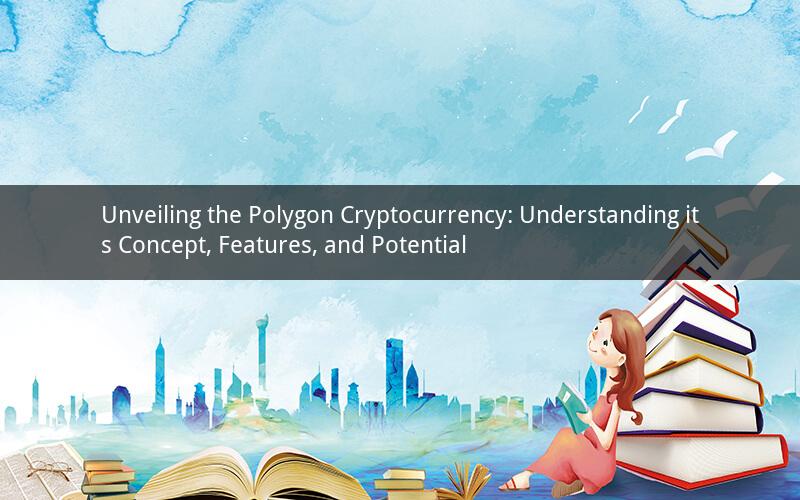
Polygon cryptocurrency, also known as Matic Network, has gained significant attention in the blockchain and cryptocurrency space. This article aims to delve into the concept, features, and potential of Polygon cryptocurrency, providing readers with a comprehensive understanding of this innovative technology.
1. What is Polygon Cryptocurrency?
Polygon cryptocurrency is a layer-2 scaling solution designed to enhance the scalability, security, and user experience of Ethereum-based applications. It aims to address the limitations of the Ethereum network, such as high transaction fees and slow processing times, by offloading some of the workload to a separate network.
2. The Concept of Polygon Cryptocurrency
The concept behind Polygon cryptocurrency is to create a more efficient and accessible blockchain ecosystem. By leveraging the power of Ethereum's smart contracts and infrastructure, Polygon aims to enable developers to build decentralized applications (dApps) that can handle a higher volume of transactions without compromising on security or decentralization.
3. Features of Polygon Cryptocurrency
a. Scalability: Polygon uses a unique architecture that allows for horizontal scaling, enabling it to handle a higher number of transactions per second compared to Ethereum. This scalability is achieved through the use of sidechains, which operate independently of the Ethereum main chain.
b. Interoperability: Polygon is designed to be compatible with Ethereum, allowing developers to build dApps on the Polygon network while still benefiting from the Ethereum ecosystem. This interoperability ensures that developers can easily migrate their projects from Ethereum to Polygon and vice versa.
c. Security: Polygon incorporates a robust security model that leverages the Ethereum main chain's security. By using a proof-of-stake (PoS) consensus mechanism, Polygon ensures that the network remains secure and decentralized.
d. Low Transaction Fees: One of the primary goals of Polygon is to reduce transaction fees. By offloading some of the workload to its sidechains, Polygon can significantly lower the cost of executing transactions on the network.
e. User-Friendly: Polygon aims to make blockchain technology more accessible to the average user. By providing a simple and intuitive interface, Polygon enables users to interact with decentralized applications without needing to understand complex blockchain concepts.
4. Potential of Polygon Cryptocurrency
a. Growth in Decentralized Applications: With its enhanced scalability and reduced transaction fees, Polygon has the potential to attract a larger number of developers to build dApps on its platform. This growth in dApps can lead to a more vibrant and diverse ecosystem of decentralized applications.
b. Increased Adoption of Blockchain Technology: As Polygon makes blockchain technology more accessible and cost-effective, it can contribute to the broader adoption of blockchain solutions in various industries, such as finance, healthcare, and supply chain management.
c. Enhanced Ethereum Ecosystem: By providing a scalable and efficient alternative to Ethereum, Polygon can help alleviate some of the network's limitations. This can lead to a more robust and sustainable Ethereum ecosystem.
d. Competition with Other Layer-2 Solutions: Polygon faces competition from other layer-2 scaling solutions, such as Optimism and Arbitrum. However, its unique features and strong community support give it a competitive edge in the market.
5. Frequently Asked Questions (FAQs)
Q1: What is the difference between Polygon and Ethereum?
A1: Polygon is a layer-2 scaling solution built on top of Ethereum, while Ethereum is a standalone blockchain platform. Polygon enhances the scalability and efficiency of Ethereum-based applications without compromising on security or decentralization.
Q2: Can I transfer my Ethereum tokens to Polygon?
A2: Yes, you can transfer your Ethereum tokens to Polygon. This process is known as "token bridging" and allows users to move their assets between the two networks seamlessly.
Q3: How does Polygon ensure security?
A3: Polygon ensures security by using a proof-of-stake (PoS) consensus mechanism and leveraging the Ethereum main chain's security. This dual-security model makes the network highly secure and resistant to attacks.
Q4: Is Polygon a good investment?
A4: As with any investment, the potential of Polygon as an investment depends on various factors, including market conditions, technological advancements, and regulatory changes. It is essential to conduct thorough research and consult with a financial advisor before making any investment decisions.
Q5: Can Polygon replace Ethereum?
A5: While Polygon aims to enhance the Ethereum ecosystem, it is unlikely to completely replace Ethereum. Both platforms have unique strengths and serve different purposes within the blockchain space. Polygon is designed to complement Ethereum, rather than replace it.